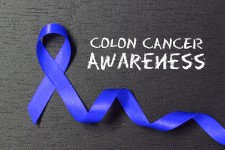March marks National Colorectal Cancer Awareness Month. And in recognition of this deadly, yet highly preventable disease, we thought we’d answer some important questions related to it, along with specific actions that one can take to minimize the risk of getting it.
First of all, what is colorectal cancer?
Colorectal cancer is found in either the colon or rectum, which together make up the large intestine. Most colorectal cancers get their start the same way other cancers do — when the body’s cells begin to divide rapidly. A growth of tissue called a polyp usually forms in the large intestine. There are two types of polyps: hyperplastic and adenomatous. The former is typically benign. As for the latter, it’s possible for cancer to grow inside an adenomatous polyp if it’s not removed.
How common are these cancers?
Colorectal cancer is the third most commonly diagnosed cancer, and the third leading cause of cancer deaths, in both men and women in the United States. Approximately 5 percent of Americans — or 1 in 20 — will be diagnosed with cancer of the colon or rectum in their lifetime. The risk of getting colorectal cancer increases with age — more than 90 percent of cases involve individuals over 50 years old.
What can I do to reduce my risk?
Knowing your risk factors is essential. A previous diagnosis of inflammatory bowel disease (Crohn's disease, ulcerative colitis), and personal family history of colorectal cancer or presence of polyps, increase one's risk for colorectal cancer.
Lifestyle factors may also contribute to an increased risk. They include:
- a lack of regular physical activity
- low fruit, vegetable and fiber intake
- consuming a high-fat diet
- being overweight or obese
- high alcohol consumption
- tobacco use
Prevention is also a key component. So, it's important to amend your lifestyle choices and follow recommended screening procedures outlined by the American Cancer Society. Recommendations for screening intervals and types of tests vary, depending on whether you're at low or high risk.



